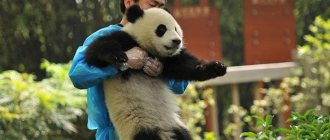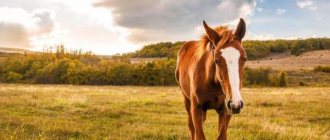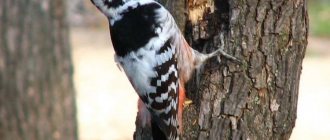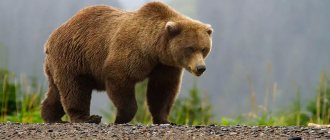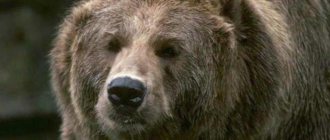Giant pandas or bamboo bears, the only representatives of their genus, are mammals from the bear family. They are easily recognized by their peculiar black and white coat color. In the middle of the last century, pandas became a national emblem in China. And the Chinese name of the species literally translates as “cat bear”.
Giant pandas first became known in the 19th century thanks to the missionary Armand David from France. They quickly became a favorite among the public due to their resemblance to teddy bears. In addition, the innocent image of a living soft toy is due to the fact that giant pandas are vegetarians and eat mainly bamboo.
There are six toes on a panda's paw
How to grow strong tomato seedlings with the right fertilizer?
Seedlings from old seeds: chamomile tea will “wake everyone up”
The strawberry harvest will increase many times: we water the bushes in the spring with garlic fertilizer
Unlike other members of the bear family, which have little or no dexterity in their paws, pandas have opposable "thumbs" along with five other fingers that help them hold bamboo and clear leaves from the plant's stems before eating.
Pandas can be dangerous
Of course, pandas are usually carefree and cheerful, but don’t let anyone be fooled by their cute facial expressions and beautiful fur. These bears are not only able to crush you with their weight, but also have very strong teeth, muscles and jaws, which they use to crush hard bamboo.
It's easy to update an old countertop with concrete: a simple master class
The woman to whom Vladimir Gostyukhin has been married for 20 years
On March 20 they launched a burning wheel: rituals on the day of the spring equinox
Panda is a calm animal
Menshikov and his young beautiful wife: why the couple has no children
This is against logic: why a child cannot manipulate his parents
American husband Mika Newton: how the singer, who emigrated to the USA, lives now
Adult pandas do not spend much time interacting with each other, and they are usually quiet. However, bears occasionally communicate through scent, squeaks, barks, growls or grunts.
Behavior and nutrition
These animals spend most of their lives alone and only during the mating season do they form pairs. Each animal has its own territory. Small pandas are active early in the morning and late in the evening, and during the day they sleep on tree branches or in hollows.
When they sleep, they curl up into a ball and cover their nose with their bushy tail. According to these characteristics, red pandas are similar to foxes. In hot weather, the animal stretches out on a branch, hanging its paws down.
Small pandas live at a maximum temperature of 25 degrees; if the climate is warmer, they may die.
Red pandas cannot tolerate heat.
The diet consists of 75% bamboo, but these pandas also eat plant roots, mushrooms, lichens, berries, and acorns. In addition, representatives of the species feed on insects and fish. Since these animals are good at climbing trees, they easily get bird eggs for themselves. Every day, the red panda consumes about 4 kilograms of plant food, so most of the time is spent on feeding, and little time is spent on rest.
We can finally find out why pandas are black and white
For years, scientists have speculated about why panda fur is colored the way it is. One position of zoologists was that this color helped the animals camouflage in forests of bamboo and snow, while the other suggested that the color of the bears helped maintain an appropriate body temperature, since black wool absorbs heat, and white wool reflects it.
How to determine when you can collect birch sap: rely on the weather
Nature generously endowed Ossetians with magical beauty: photo
The man thought he got a mini-pig: the pet “did not meet” his expectations
But in 2022, a study published in the journal Behavioral Ecology confirmed that the camouflage theory was in fact correct: white fur helps the animal hide in snowy habitats, while black fur is used for camouflage in the mountains. The study authors believe that the bears' black ears are a sign of aggression towards predators, and the black fur around their eyes helps them identify other pandas.
PANDA (Ailuropoda melanoleuca) has the most original appearance of the representatives of the raccoon family. She looks more like a bear cub. It’s not for nothing that this panda is called a bamboo bear, and some zoologists even classify it as a member of the bear family. The length of the giant panda reaches 1.2-1.5 m and weighs from 17 to 160 kg. The panda's massive body, covered with thick fur, rests on short, thick legs with wide paws armed with strong claws. On the soles and at the base of each toe, bare pads are well developed, making it easier to hold the smooth bamboo stems. The giant panda's head is massive, blunt-faced, with large ears. The panda is distinguished from bears by its rather long (12 cm) tail. The coloring of this animal is mainly white, but with black spots (“spectacles”) around the eyes and black legs; at the same time, the black coloring of the forelimbs merges with a wide “collar” of the same color that encircles the body over the shoulders. Apparently, such an unusual coat color has a camouflage, or protective, meaning. The giant panda became known only in the middle of the 19th century. Naturalists first observed a living panda in nature only in 1913. It is one of the rarest, poorly studied large animals, which is facilitated by a secretive lifestyle. The giant panda is found only in the mountain forests of several western provinces of China (Sichuan, Gansu, Tibet). Mainly solitary except when mating in the spring and raising young, which are born the following winter, usually in January. There are 1-2 of them, each weighing about 2 kg. The giant panda does not hibernate, but is active all year round, spending 10-12 hours feeding every day. The panda feeds mainly on thin sprouts and partly roots of bamboo, and in addition, various other plants, and occasionally animals, in particular fish, pikas and small rodents.Bamboo Bear - Giant Panda
Name: (Russian, English) Giant Panda Latin name: Ailuropoda melanoleuca David, 1869. Other names: In Brem's time, this animal was known as the Tibetan mountain bear. Range: The giant panda is found only in the mountain forests of several western provinces of China (Sichuan, Gansu, Tibet). Previously, it also lived in mountain bamboo forests in Indochina and on the island of Kalimantan. The full range covers 29,500 square km, but only 5,900 sq. km is home to the panda.
The panda's body is massive and covered with thick fur. The legs are short, thick, with wide paws armed with strong claws. On the soles and at the base of each toe, bare pads are well developed, making it easier to hold the smooth bamboo stems while eating. Its feet, rounded and hairy at the bottom, are short and do not fully rest on the ground when walking, like those of large bears. The giant panda's head is massive, blunt-faced, with large ears. The panda is distinguished from bears by its rather long (12 cm) tail and teeth structure. Of the 40 teeth, there are four false and two true molars at the top, and three false and three true molars at the bottom. The molars and premolars are wider and flatter than those of other bears, and they have developed extensive cusps and projections for grinding the tough bamboo when eating.
Despite its external resemblance to a bear, the anatomy of the giant panda is so unusual that the panda was placed either in the raccoon family, then in the bear family, or in its own special family. This bear-like animal was long considered a "giant raccoon" due to its common anatomical features with the red panda (which was considered a raccoon without question). However, ordinary Chinese peasants, who have long called the big panda a “polar bear” (literally - bei-shuang) or “bamboo bear,” turned out to be closer to the truth than the venerable taxonomists, who only recently figured out that the big panda is still a bear.
Australian paleontologist E. Tennius, based on an analysis of the morphology, biochemistry, cardiology and ethology of the giant panda, showed that in 16 characteristics it is close to bears and only in five - to the red panda and other raccoons, and 12 characteristics are characteristic only of it alone. Tennius believed that the giant panda deserves to be classified as a special panda family (Ailuropodidae), which was proposed by R. Pokcock in 1921.
Molecular biological and cardiological studies of the giant panda, conducted by a group of American researchers, led to the conclusion that in the process of evolution, the branch of the giant panda separated from the line of development of bears about 25-18 million years ago - in the first half of the Miocene. Some common peculiar characteristics of the big and small pandas are apparently explained not by their common origin, but by the parallel preservation of ancestral characteristics in the same natural conditions of Southeast Asia.
Color: The main color background of the giant panda is white. There are characteristic black spots (“spectacles”) around the eyes. Legs black; at the same time, the black coloring of the forelimbs merges with a wide “collar” of the same color that encircles the body over the shoulders. The ends of the ears and the tip of the tail are also black. Apparently, such an unusual coat color has a camouflage, or protective, meaning.
There is an ancient Chinese story about how giant pandas got their unique coloring. A young girl who was a friend of these bears died and the pandas were heartbroken. They cried at the funeral and constantly rubbed their eyes with their paws. Thus the dark color of their paws was transferred to their eyes. The bears then hugged themselves out of grief and marked their ears, shoulders, and hind legs with black and colored themselves the way we see them today.
Size: The giant panda reaches a length of 1.2–1.8 m, with an average length of 1.65 m (4.92–5.9 ft; average 5.41 ft). Tail length is about 12 cm. Shoulder height is 65-70 cm.
Weight: The giant panda weighs from 70 to 125 kg, rarely up to 160 kg; on average - 102.50 kg. Males weigh about 10 percent more than females (males weigh 85-125kg, females 70-100kg).
Lifespan: One giant panda at the zoo lived about 34 years, but this is not the norm. The usual maximum lifespan in captivity is 26 years. Life expectancy in nature is not precisely known, but is apparently approximately 14 years, with a maximum of 20 years.
Voice: Giant pandas are very nearsighted but have excellent listening abilities.
Pandas are usually silent animals that prefer silence. But they seem to be able to bleat, making a sound similar to that produced by lambs or kids. This is a friendly sound, a greeting. When an animal is irritated, it can roar (though not at all like bears) or buzz. Panda puppies often whine and squeal. Pandas also vocalize actively during social interactions. They "chirp" during mating and buzz in distress. A squeal indicates submission or pain. “Chomping” (quickly opening and closing the mouth so that the teeth are expressively shown to the partner) is a soft defensive threat.
Habitat: Giant pandas live in dense impenetrable bamboo forests at an altitude of 1200 to 4500 m above sea level, in a very temperate climate with a pronounced change of seasons. Dense thickets of bamboo, reaching a height of 3-4 meters, provide the panda with shelter and food supplies. Throughout the year, these forests, often shrouded in heavy clouds, are characterized by heavy rains or dense haze. Enemies: Today the giant panda has no natural enemies, but in the past there may have been, such as tigers. The biggest threat to the panda's survival right now is the loss and degradation of its habitat.
Giant pandas, in terms of their technical equipment, are carnivores, but they had to adapt to living and feeding mostly on 30 types of bamboo (over 99% of their diet). The giant panda has become a narrow vegetarian and feeds on succulent young shoots and old stems, up to 13 mm in diameter, and even the roots of bamboo, using its powerful jaws and strong teeth to crush the tough, fibrous bamboo, grinding it into pieces.
The stomach walls are extremely muscular, which helps in digesting the woody diet. The panda's esophagus and stomach are lined with layers of elastic mucous tissue to protect against bamboo slivers. Monotonous food has little nutritional value and is difficult to digest, and therefore the panda is forced to chew almost all its waking hours - which is 10-12 hours a day - while moving through the bamboo thicket. To get enough nutrition they are forced to eat 12 to 18kg of bamboo per day. When digesting bamboo, they use an average of only 17% dry matter. Therefore, giant pandas have an extremely strict energy budget for their body. They travel little and usually only when they have depleted nearby food resources.
Bamboo is an interesting plant! Many types of bamboo grow incredibly fast—Japanese bamboo culms can grow almost 4 feet (1.2 m) in a day! Bamboo, grown from seed, grows for many years to reach full size and maturity, gradually growing into an entire grove. Then the bamboo blooms, and having given seeds, it dies: the whole grove dies! At least 2 - 3 years are required for new shoots to form from the seed. So for all the animals who depend on bamboo—giant pandas, red pandas, and humans—flowered bamboo predicts deprivation for years to come. Thus, the flowering of monocarpic bamboo species that began in the 70s of the 20th century and their death over large areas deprived pandas of food in a number of places and, as a result, between 1974 and 1976, at least 138 pandas died.
In addition to bamboo, giant pandas eat bulbs (such as iris and saffron), grasses and sometimes insects, carrion, eggs, small rodents and other animals - whatever they can catch.
In the wild, giant pandas get a lot of their fluids from bamboo, which on average is half water. Young bamboo shoots are almost 90 percent water. But pandas need more water than bamboo can provide. So almost every day, pandas drink fresh water from rivers and streams that feed on melting snow on high mountain peaks.
In zoos, giant pandas eat bamboo, sugar cane, thin rice porridge, special fiber-rich biscuits, carrots, apples, and sweet potatoes.
Some pandas do not reproduce for a long time
Scientific evidence suggests that giant pandas may unknowingly contribute to being listed as an endangered species. Female pandas can only mate two or three days a year, and some males don't know how to do it.
"Tian-Tian and Mei-Xiang, a pair of pandas who live together at the National Zoo in Washington, D.C., have not sired a cub in 13 years," says David Wildt, director of the Zoo's Center for Species Survival.
Reproduction and lifespan
The breeding season for red pandas runs from January to early March. Gestation time is 4-5 months. Before the birth of the offspring, the female builds a nest. Nests are made in hollows or crevices between rocks. The bottom of the nest is insulated with leaves and grass.
Female red panda with newborn babies.
The female gives birth to 1-4 cubs, each weighing 110-130 grams. The babies are naked and blind, their vision appears only after 3 months. Puberty in small pandas occurs at one and a half years of age, but these animals are considered adults at 2-3 years.
Pandas may soon be endangered
A final fact about animals is a sad reality. Despite the fact that pandas do not have many predators, there are about 1,800 of them left in the wild. This is the estimate of the World Wildlife Fund. The bears' conservation status of "vulnerable" is just one step above "threatened" status. The main factors for this situation are poaching and loss of habitat due to the construction of roads and railways.
Fortunately, organizations like the World Wildlife Fund are working hard to preserve panda habitats and populations for years to come.
Found a violation? Report content

